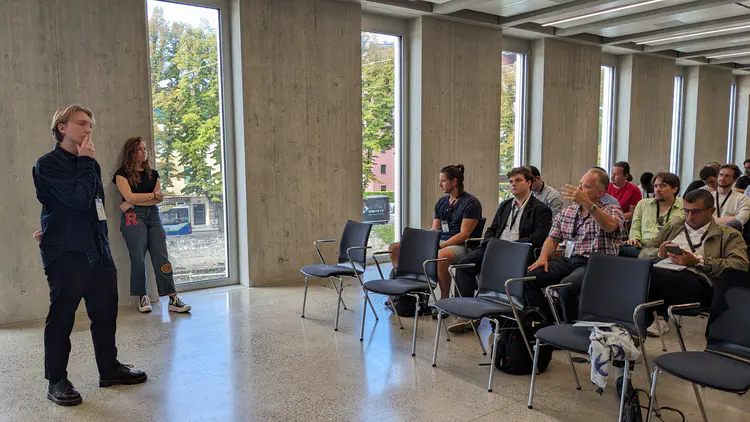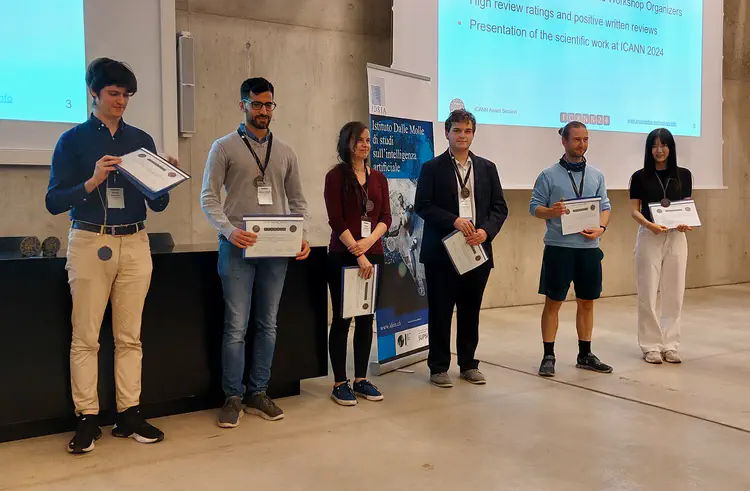TERAIS at ICANN 2024 - the 33rd International Conference on Artificial Neural Networks

The ICANN is a flagship conference of the European Neural Network Society (ENNS) who’s current president is one of the TERAIS leads, professor Stefan Wermter from University of Hamburg (UHAM). The 2024 edition was organised by the Dalle Molle Institute for Artificial Intelligence Research (IDSIA USI-SUPSI) in collaboration with AIDD and AiChemist Horizon MSCA projects. The conference took place in beautiful Lugano, Switzerland. TERAIS researcher Kristína Malinovská from Comenius University in Bratislava fulfilled a pivotal role as the program chair and proceedings’ editor of ICANN 2024, leading our team in organising the second edition of the Special Session in Neurorobotics.
Our special session was a success. The lecture hall was filled, and discussions were very lively and fruitful. There were six presentations in total, covering topics such as self-organisation and causality in neural controllers for robots, action recognition and understanding, active vision and modular task planning. Our TERAIS team member and young talent, Miroslav Cibula (Comenius University in Bratislava), presented his paper on “Learning Low-Level Causal Relations using a Simulated Robotic Arm” which was a joint work with our collaborator Matthias Kerzel (University of Hamburg), supervised by our PI, professor Igor Farkaš (Comenius University in Bratislava). The paper focused on implementing the capacity to predict the effect of actions as causal chains via the so-called forward and inverse models. This ability is crucial in the design of intelligent robotic systems such as our NICO robot.
At the conference Miroslav was awarded the prestigious ENNS Student Award for emerging student talents, being the youngest of the prize winners. One of three main conference prizes, specifically the Springer Best Paper Award was presented to colleagues from University of Hamburg - Philipp Allgeuer, Hassan Ali and Stefan Wermter for the paper “When Robots Get Chatty: Grounding Multimodal Human-Robot Conversation and Collaboration”. Big congratulations from all of us once again!
The paper about chatty robots introduced a complex neural architecture composed of Large Language Models (LLMs) which gave the NICOL robot human-like cognitive abilities and allowed it to perform an open-ended conversation and collaboration with a human user. This ability was demonstrated via a guessing game played between the robot and a human counterpart. You can watch the demonstration in this video by our colleagues from Hamburg.





